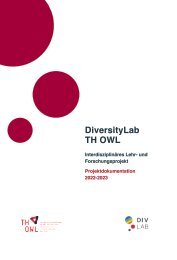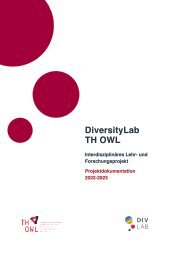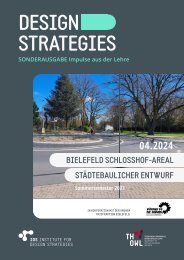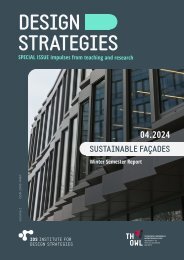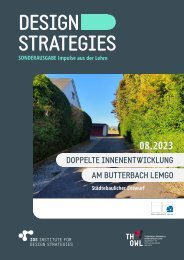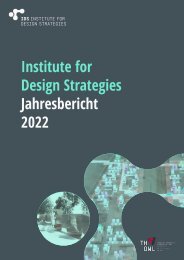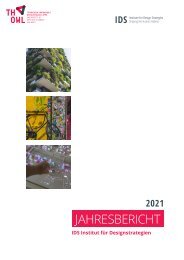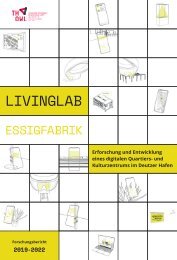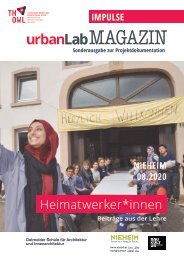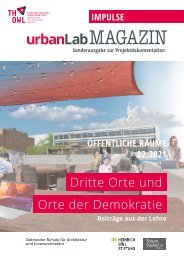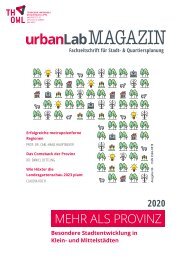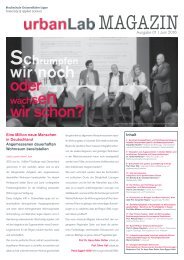urbanLab Magazin 2021 - Transformation
Erfolgreiche ePaper selbst erstellen
Machen Sie aus Ihren PDF Publikationen ein blätterbares Flipbook mit unserer einzigartigen Google optimierten e-Paper Software.
Fig. 2: The water feartures and their spectrum<br />
at the Sheaf Square, Sheffield, UK.<br />
SPACE<br />
In urban open public spaces, architectural<br />
changes and urban design options<br />
could affect the sound field significantly.<br />
A study in a typical urban square<br />
(Kang, 2005) shows that if a relatively<br />
far field is considered, the sound pressure<br />
level (SPL) is typically 6-9dB lower<br />
when the square side is doubled;<br />
8dB lower when the square height is<br />
decreased from 50m to 6m (diffuse<br />
boundaries); 5dB (diffuse boundaries)<br />
or 2dB (geometrical boundaries) lower<br />
if the length/width ratio is increased<br />
from 1 to 4, and 10-12dB lower if the<br />
boundary absorption coefficient is increased<br />
from 0.1 to 0.9. Whilst these<br />
results show the effectiveness of controlling<br />
the geometry and boundary<br />
conditions for soundscape planning<br />
and design, other landscape elements<br />
may be effective too, such as vegetation,<br />
urban furniture and barriers.<br />
Reverberation is also an important index<br />
for the soundscape in urban open<br />
public spaces. On the one hand, with a<br />
constant SPL, soundscape evaluation<br />
may vary with different reverberations.<br />
On the other hand, a suitable reverberation<br />
time (RT), say 1-2s, can make<br />
street-music more enjoyable.<br />
PEOPLE<br />
Considerable research has been carried<br />
out in terms of the effects on the<br />
soundscape evaluation (Yu and Kang,<br />
2008) by various (1) social and demographic<br />
factors, including age, gender,<br />
education, profession, residential status<br />
(i.e. local and non-local), cultural<br />
background, and acoustic environment<br />
at home and at working place; (2) activities<br />
including moving types such as walking,<br />
playing with children, and sport;<br />
and non-moving types such as sitting,<br />
standing, reading, and watching; and (3)<br />
behaviours such as wearing earphones<br />
and sunglasses. The results have clearly<br />
58 HUMAN CENTERED DESIGN




